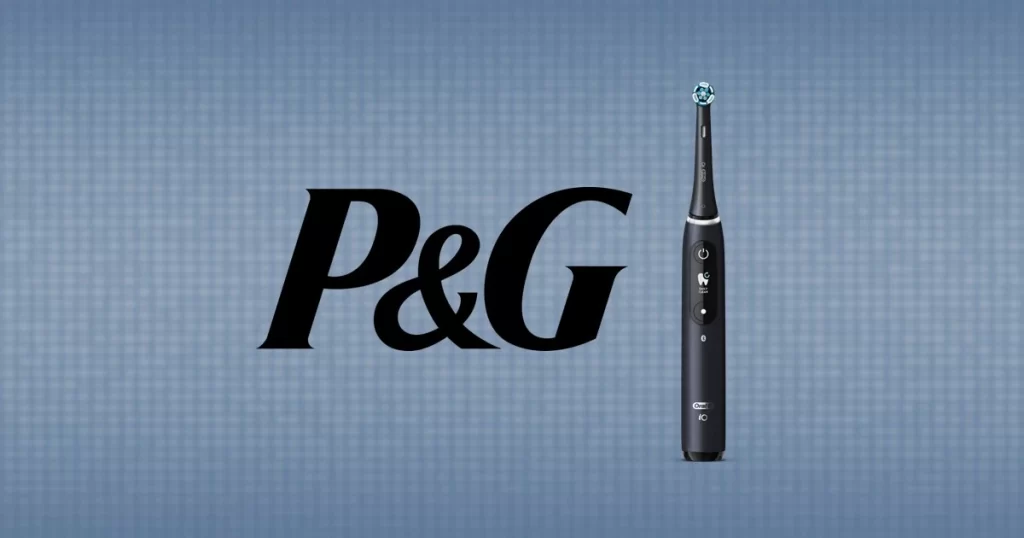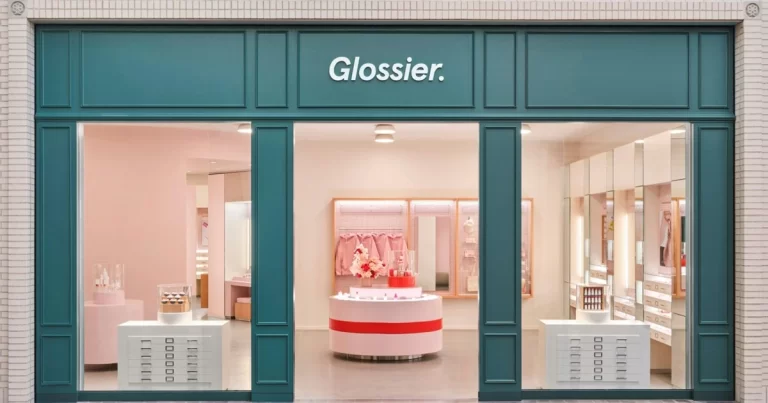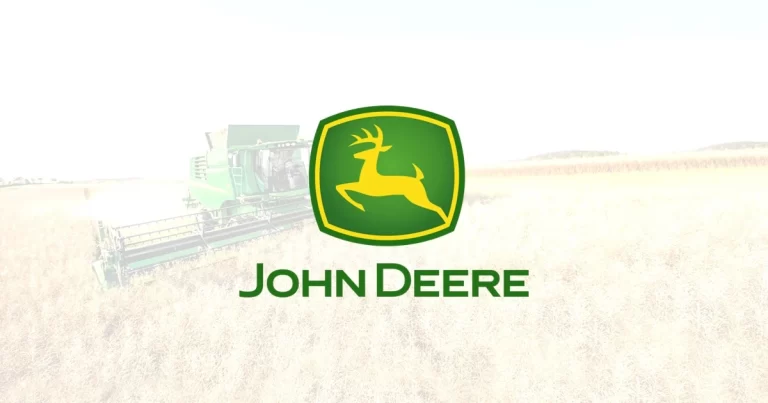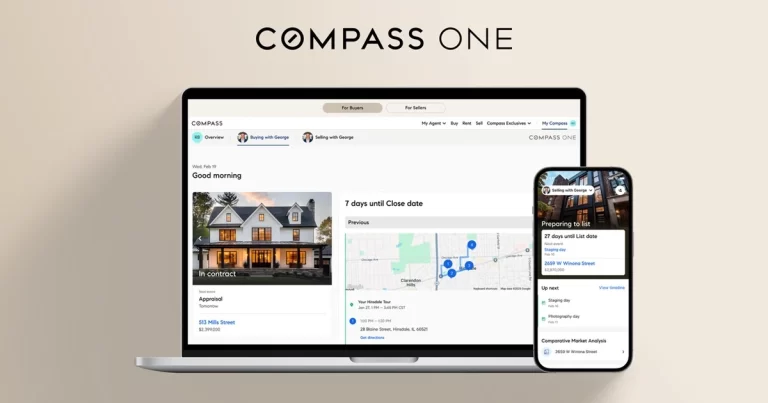Introduction: Redefining Personalization Through Data and Devices
In a world of short attention spans and rising expectations, personalization is essential. For Procter & Gamble (P&G), delivering it at scale was once a challenge. But by embedding consumer data analytics into its operations and integrating smart consumer products into daily routines, P&G turned this into a strategic advantage.
From toothbrushes that track habits to skincare tools that scan and suggest, P&G blends data and product intelligence to create anticipatory experiences—not just responsive ones.
The real differentiator is execution. Cross-functional teams across marketing, data, and product development have aligned to deliver not just personalized messages, but meaningful moments—fueling loyalty, sharper insights, and faster innovation.
P&G’s journey proves that even traditional brands can lead in personalization by making everyday products smarter and more connected.
Scaling Personalization in a Mass Market World
Procter & Gamble serves millions of households globally, yet even with its massive reach, the company faced a critical issue: generic, broad-stroke marketing was no longer enough. Consumers now expect relevance, speed, and experiences tailored to their habits.
To meet those demands, P&G had to overcome several significant hurdles:
Key Obstacles Faced
- Siloed Consumer Data: Disconnected data across product lines made it hard to form a complete customer view.
- Outdated Feedback Loops: Insights from surveys or retail data came too late for real-time decision-making.
- Inconsistent Messaging: Varying strategies across regions diluted the brand and confused consumers.
- Tech Limitations: Legacy systems couldn’t handle the speed or scale needed for predictive analytics.
- Localization at Scale: Customizing experiences for diverse markets without losing brand unity was complex.
Snapshot of the Problem
| Challenge Area | Personalization Impact |
|---|---|
| Fragmented Data Systems | Incomplete customer insights |
| Manual Campaigns | Slow, static marketing efforts |
| Generic Messaging | Low engagement and conversions |
| Non-Adaptive Products | Weak feedback loops |
To move beyond these limitations, P&G needed more than better ads—it needed a smarter system. That meant using consumer data analytics and embedding intelligence into smart consumer products to create experiences that adapt to each customer, in real time.
Strategic Approach: Turning Everyday Products into Data-Powered Experiences
Procter & Gamble’s path to personalization didn’t start with flashy ads or superficial customization—it began with a deep, structural shift in how the company understands its consumers. Rather than relying solely on traditional market research, P&G focused on building an end-to-end system that blends consumer data analytics with insights collected directly from smart consumer products.
This strategy was not about isolated campaigns but a connected ecosystem where products, platforms, and people all work together to deliver value in real time.
Three Pillars of P&G’s Data-Driven Strategy
- Unified Data Architecture: P&G consolidated consumer data from across the organization—retail purchases, app usage, product feedback, and IoT sensors—into a centralized analytics platform. This created a single source of truth for personalization.
- Real-Time Consumer Intelligence: The company moved from reactive to predictive marketing by deploying AI models that identify trends, preferences, and intent. This allowed P&G to proactively offer recommendations, reminders, and customized content.
- Product-Level Personalization: Smart products like the Oral-B iO toothbrush and SK-II’s skin diagnostics tool became both data sources and engagement channels, offering tailored tips and product suggestions based on real usage.
Cross-Functional Integration
P&G didn’t treat data as a marketing tool—it made it a company-wide priority. Teams across R&D, IT, digital innovation, and marketing now collaborate using shared dashboards, unified metrics, and AI-powered experimentation tools.
Here’s a snapshot of how this approach aligns across functions:
| Function | Role in Personalization Strategy |
|---|---|
| Marketing | Builds dynamic campaigns based on real-time data |
| R&D | Designs new features based on consumer usage insights |
| IT/Data Science | Maintains data infrastructure and predictive models |
| Product Teams | Integrate IoT and feedback tools into smart products |
Tactical Execution Highlights
- Standardized data taxonomies across business units for consistency
- Partnered with tech leaders for AI, CRM, and cloud storage integrations
- Used A/B and multivariate testing at scale to fine-tune personalized messaging
By focusing on personalization from the inside out—starting with how data is collected, shared, and used—P&G created a system that continuously learns and evolves. This strategic alignment made it possible to move from mass communication to meaningful, one-on-one interactions with millions of consumers.
Implementation: Building a Personalization Engine from Product to Platform
Translating strategy into execution required more than good intentions—it demanded infrastructure upgrades, cross-team coordination, and smart use of emerging technology. Procter & Gamble didn’t roll out personalization in one big leap; instead, they deployed it in phases, focusing first on data foundation, then product integration, and finally marketing automation.
Each step was tightly connected, ensuring that data didn’t just flow—but flowed with purpose.
Phase 1: Laying the Digital Foundation
P&G started by transforming its legacy systems into a cloud-first, real-time data architecture. This included:
- Migrating consumer and product data into a centralized, scalable platform
- Establishing secure APIs to connect smart products with backend analytics systems
- Aligning internal tools with CRM platforms to create seamless customer journeys
This foundational work ensured that data from any product, app, or channel could be captured and activated in near real time.
Phase 2: Smart Product Integration
Next, P&G rolled out intelligent features across flagship products. These weren’t just “smart” for the sake of it—they actively gathered insights to personalize the experience.
-
- Oral-B iO Toothbrush: Equipped with sensors and Bluetooth, it tracks brushing patterns, sends feedback via app, and recommends oral care products based on user habits.
- SK-II Magic Scan: Uses facial diagnostics to analyze skin texture and suggest personalized skincare routines through an app, driven by AI algorithms.
- Ariel Pods Smart Dispenser (pilot): Tests how much detergent is used per load and nudges consumers when they’re likely to run out, offering refills and tips.
Phase 3: Personalized Marketing Orchestration
Once the data pipeline and product connectivity were live, P&G turned to automating and personalizing its communications at scale. The company implemented:
- Trigger-based campaigns linked to product usage (e.g., toothbrush head replacement reminders)
- Real-time segmentation and messaging based on user behavior
- Customized content experiences in emails, apps, and ads
Operations Aligned with Data
This transformation also reshaped internal workflows:
| Operational Area | Transformation Initiative |
|---|---|
| Supply Chain | Aligned stock levels with real-time consumer usage trends |
| Customer Support | Provided reps with product-usage data for faster service |
| Marketing Calendar | Shifted from fixed timelines to dynamic, data-driven plans |
With these systems in place, P&G created a virtuous cycle: products generate data, data powers insights, and insights drive better products and personalized marketing.
The result is not just efficiency—it’s a deeply personalized, user-centric ecosystem that continuously improves over time.
Results and Impact: From Mass Marketing to Me Moments
The results of Procter & Gamble’s transformation have been both quantitative and qualitative, reshaping how the company connects with consumers and how consumers perceive the brand. By fusing consumer data analytics with smart consumer products, P&G didn’t just optimize campaigns—it reinvented the entire customer experience.
Financial Momentum: How Data and Innovation Fueled P&G’s Growth
Over the past six years, Procter & Gamble has demonstrated consistent growth in net sales, rising from $67.7 billion in 2019 to $84.0 billion in 2024. Notably, operating income saw a significant increase from $5.5 billion in 2019 to $18.5 billion in 2024, reflecting enhanced operational efficiency and strategic cost management. Net earnings also experienced substantial growth, more than tripling from $3.9 billion in 2019 to $14.9 billion in 2024. These figures underscore P&G’s successful implementation of data-driven strategies and its commitment to delivering value to shareholders.
P&G’s Shift to Digital: Key Metrics
Between 2019 and 2024, Procter & Gamble has significantly advanced its digital transformation initiatives. The number of smart product users grew from 5.2 million to 20.5 million, reflecting the company’s commitment to integrating technology into everyday consumer products. Concurrently, the launch of AI-driven campaigns increased from 12 to 90, and digital R&D projects initiated rose from 25 to 135, indicating a robust investment in innovation. Additionally, e-commerce sales as a percentage of total sales more than doubled, showcasing P&G’s successful adaptation to the digital marketplace.
Business and Brand-Level Impact
Beyond performance metrics, the strategic shift delivered broader business value:
- Deeper Consumer Loyalty: Personalization led to stronger emotional bonds, particularly in categories like skincare and oral care, where users interact with products daily.
- Smarter R&D and Product Innovation: Consumer usage data fed directly into the R&D pipeline, reducing guesswork and shortening feedback loops.
- Higher Marketing ROI: With fewer wasted impressions and more targeted messaging, P&G saw significant cost efficiencies across channels.
- Brand Differentiation: P&G was no longer just a product manufacturer—it became a partner in daily routines, which is a much stickier brand position.
Quantifiable Gains That Tell a Bigger Story
P&G tracked improvements across multiple dimensions—engagement, conversions, retention, and operational efficiency. The following table highlights some of the most significant outcomes:
| Performance Metric | Pre-Implementation | Post-Implementation | Change (%) |
|---|---|---|---|
| Email Open Rates (Personalized Emails) | 14% | 38% | +171% |
| Conversion Rate (Smart Product Users) | 3.7% | 12.2% | +229% |
| Product Return Rate | 6.9% | 3.1% | –55% |
| Time to Launch New Product Features | 16 months | 8 months | ~50% faster |
| Repeat Purchase Rate | 18% | 34% | +89% |
These numbers reflect more than just efficiency—they signal a shift in how customers relate to P&G’s brands: as personalized, helpful, and intuitive rather than generic and static.
Consumer Experience: What Changed on the Ground
Before: Consumers received the same message, regardless of their needs, habits, or preferences.
After: A user brushing too hard with an Oral-B toothbrush gets instant feedback and a product recommendation. A SK-II customer receives skincare tips tailored to their skin condition. A laundry user gets reminders timed perfectly to their usage patterns.
By embedding intelligence into its ecosystem, P&G made its products more responsive, its marketing more relevant, and its brand more human. The result? Personalized moments at scale—and millions of them every day.
Competitive Landscape: Leading the Race Toward Intelligent Personalization
The consumer goods sector has seen a sweeping shift as major players embrace data-driven personalization. Companies like Unilever, Johnson & Johnson, Nestlé, and Colgate-Palmolive are all investing in AI and consumer analytics, but the depth, integration, and execution of these strategies vary widely.
What separates Procter & Gamble isn’t just its investment in data—but how it activates that data across products, platforms, and consumer touchpoints.
Industry-Wide Shift Toward Personalization
Over the past five years, personalization has evolved from a marketing “bonus” to a business imperative. Competitors are adapting in various ways:
- Unilever is building behavioral segments to fuel media targeting but still leans heavily on third-party data.
- Johnson & Johnson focuses on health tech integration, especially in beauty and wellness, with AI-led diagnostics.
- Nestlé experiments with personalized nutrition, using surveys and DNA tests to guide product bundles.
- Colgate-Palmolive recently launched a smart toothbrush line but is still in early stages of data infrastructure.
P&G’s Competitive Differentiators
| Company | Smart Product Use | Personalization Model | Data Source Integration | Market Readiness Level |
|---|---|---|---|---|
| Procter & Gamble | High (Oral-B, SK-II, Ariel) | Predictive & Prescriptive AI | Unified first-party and IoT | Advanced – Fully Integrated |
| Unilever | Low (Limited IoT) | Behavioral Segments | Mostly third-party | Intermediate |
| Johnson & Johnson | Medium (Beauty Tech) | Diagnostic-Based | Clinical + app data | Developing |
| Nestlé | Low (Nutrition Trials) | Survey/Questionnaire-based | Manual input | Experimental |
| Colgate-Palmolive | Medium (Smart Brush Pilot) | Basic feedback loops | Device-only | Early-stage |
Why P&G Leads the Pack
- Real-Time Intelligence: Unlike competitors relying on static consumer profiles, P&G pulls real-time data from smart products to shape interactions instantly.
- Deeper Product Integration: Personalization isn’t bolted onto campaigns—it’s built into the product experience itself.
- Scalable Infrastructure: P&G’s use of cloud computing, AI-driven automation, and centralized analytics enables global rollout with local relevance.
In a landscape where many are still experimenting with data personalization, P&G has moved into execution mode. The result? A sustainable edge that turns consumer insight into ongoing brand intimacy—something that’s tough to replicate.
Future Outlook: Scaling the Next Generation of Personalization
Procter & Gamble has laid a robust foundation for personalized marketing powered by consumer data analytics and smart consumer products, but this is just the beginning. As consumer expectations continue to evolve and digital ecosystems become more intelligent, P&G is doubling down on innovation to maintain its leadership position.
Three Strategic Directions for the Future
1. Expanding the Smart Product Ecosystem
P&G plans to extend connectivity beyond its current portfolio. This could include smart hygiene products, interactive packaging with QR-based data capture, and household items that adjust usage recommendations based on environmental data (e.g., detergent adapting to water hardness).
2. Hyper-Personalization at the Micro-Moment Level
With improved machine learning models, P&G aims to deliver micro-targeted interactions that anticipate needs even before the consumer realizes them—like suggesting a new product when behavioral trends shift, or offering personalized skincare advice based on weather and travel data.
3. Advanced Consumer Privacy and Data Trust
As personalization deepens, so does the need for ethical data use. P&G is investing in privacy-first architectures, giving consumers control over their data while maintaining transparency on how it’s used to enhance their experience.
Emerging Tech P&G Is Exploring
| Technology | Potential Use Case |
|---|---|
| Generative AI | Creating customized content for millions of unique users |
| Augmented Reality (AR) | Virtual product demos via mobile apps |
| Voice & Ambient Interfaces | Personalized voice interactions in smart homes |
| Blockchain for Consent | Ensuring traceable, secure user consent for data usage |
Long-Term Vision
P&G’s ultimate vision is to become more than a product provider—it wants to be a proactive participant in consumers’ daily routines. That means anticipating household needs, supporting health and wellness journeys, and creating moments of value that feel genuinely personal.
By continuing to innovate at the intersection of data, devices, and human behavior, P&G isn’t just keeping up with the future—it’s shaping it.
Conclusion: Setting a New Standard for Consumer-Centric Innovation
Procter & Gamble’s transformation from traditional mass marketing to intelligent, data-powered personalization is more than a tech success story—it’s a blueprint for how legacy companies can stay relevant in a fast-changing world. By embedding consumer data analytics into both strategy and product design, and leveraging smart consumer products as both tools and data channels, P&G has turned everyday items into engines of insight and engagement.
What’s most impressive isn’t just the scale—it’s the depth. From predictive AI to seamless customer journeys, the company has redefined what it means to connect with consumers in real time, on their terms.
Key Takeaways
- Personalization starts with infrastructure: P&G’s success was built on a unified data foundation and cross-functional collaboration.
- Smart products unlock real-time insight: Devices like Oral-B iO and SK-II skin diagnostics became both service tools and data sources.
- AI is the engine, but experience is the driver: P&G’s ability to act on data in real time has made personalization feel intuitive, not intrusive.
- Privacy is the new value proposition: Trust and transparency are essential to sustaining consumer relationships in a data-driven world.
- Future-ready brands are always evolving: P&G isn’t stopping—it’s already building toward micro-moments, voice integration, and hyper-personalized content.
As the lines blur between product, platform, and personal assistant, Procter & Gamble has proven one thing: in the age of data, the most human brands will win.




